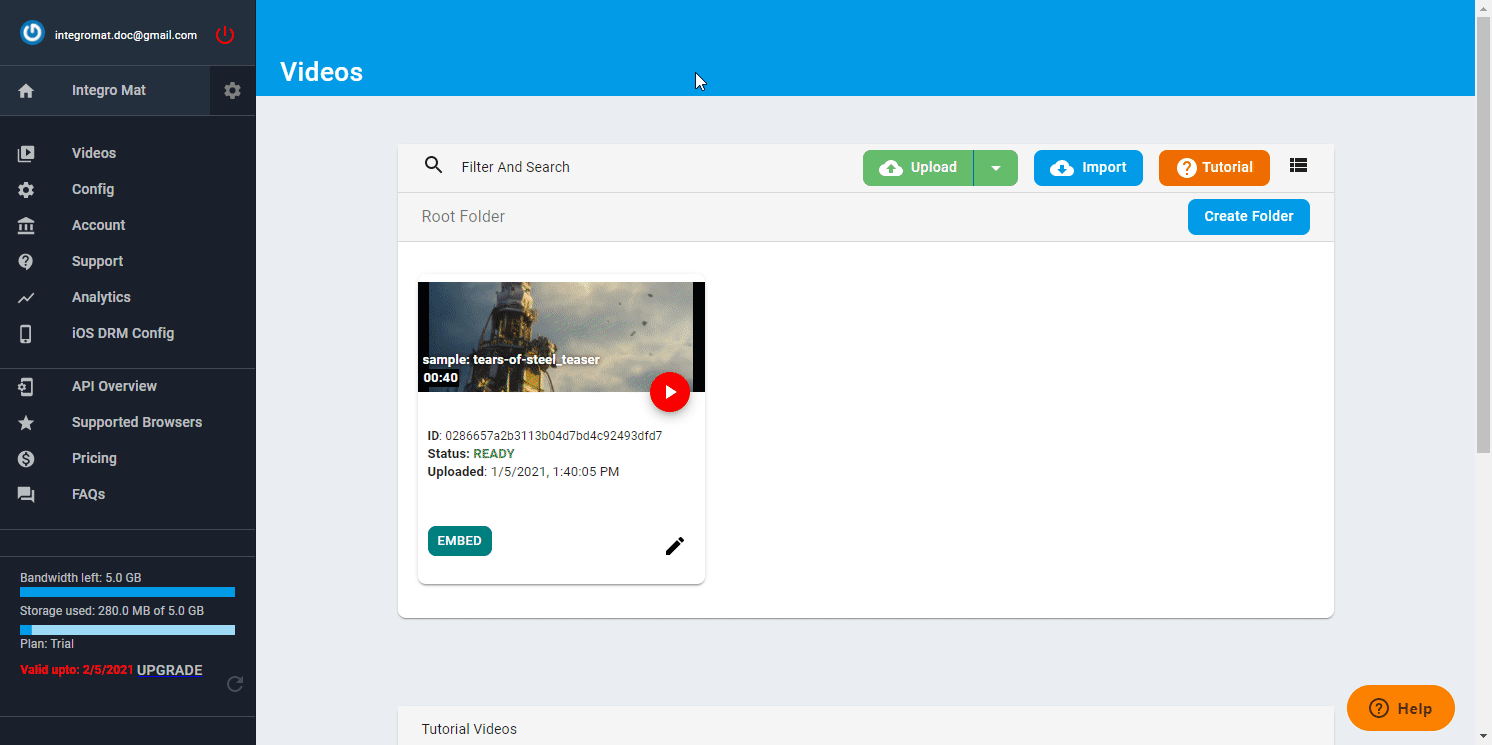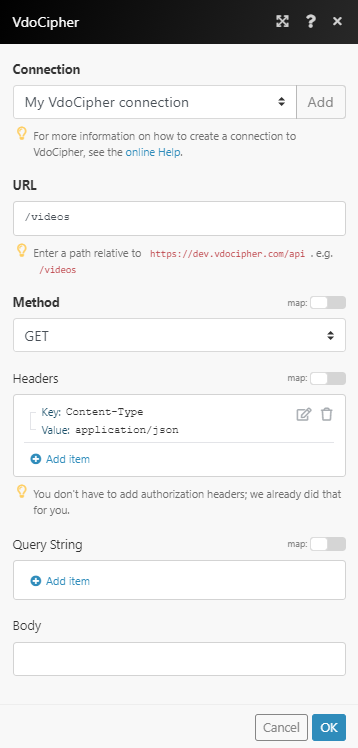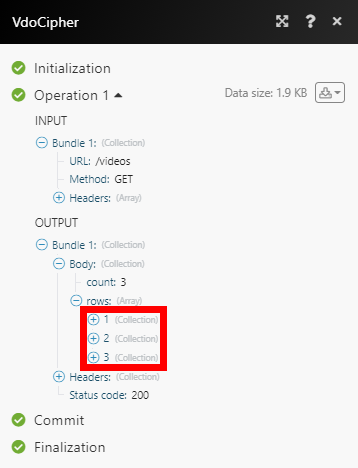VdoCipher
The VdoCipher modules enable you to monitor video status, upload or import video from URL, or generate OTP in your VdoCipher account.
Getting Started With VdoCipher
Prerequisites
A VdoCipher account — you can create one at www.vdocipher.com/dashboard/register.
Note
The module dialog fields that are displayed in bold (in the Make scenario, not in this documentation article) are mandatory!
Connecting VdoCipher to Make
To connect your VdoCipher account to Make, you'll need to obtain the API secret key from your VdoCipher account, and insert it in the VdoCipher module's Create a connection dialog.
Log in to your VdoCipher account.
Navigate to Config > API Keys. Click Generate API Key.

Copy the provided API Key.
Go to Make, and open the VdoCipher module's Create a connection dialog.
5Enter the API Key you have copied in step 3 in the API secret key field, and click the Continue button to establish the connection.
The connection has been established. You can proceed with setting up the module.
Video
Triggers when a video is ready or encounters an error.
Webhook name | Enter the name for the webhook, e.g., Video ready. |
Connection | |
Event | Select one of the options:
|
Uploads video to your account.
Connection | |
Video Title | Enter the title of the video. |
Source File | Map the file you want to upload from the previous module (e.g., HTTP > Get a File or Google Drive > Download a File), or enter the file name and file data manually. |
Initiates video import from any HTTP/ FTP URL.
Note
YouTube links cannot be imported.
Connection | |
HTTP/ FTP URL | Enter the URL of the video you want to import. |
OTP
Generates an OTP token for video playback.
You will need to send both OTP and Playback Info generated by this module to your website front-end as part of the embed code.
Connection | |
Video ID | Enter the ID of the video. You can use the video title or tags to find the correct video ID. |
Time-to-live in seconds | Set the time-to-live in seconds. For more details, please refer to the VdoCipher ttl documentation. |
URL Whitelist | A string that matches the regex passed. For more details, please refer to VdoCipher URL Whitelist documentation. |
Is Offline Video | Enable this option, and specify the Rental duration in secondsto allow your viewers to download an encrypted version of the video to their Android devices. |
Allows you to perform a custom API call.
Connection | |
URL | Enter a path relative to For the list of available endpoints, refer to the VdoCipher API Documentation. |
Method | Select the HTTP method you want to use: GET to retrieve information for an entry. POST to create a new entry. PUT to update/replace an existing entry. PATCH to make a partial entry update. DELETE to delete an entry. |
Headers | Enter the desired request headers. You don't have to add authorization headers; we've already added these for you. |
Query String | Enter the request query string. |
Body | Enter the body content for your API call. |
The following API call returns all videos in your VdoCipher account:
URL:
/videos
Method:
GET
 |
The result can be found in the module's Output under Bundle > Body > rows.
In our example, 3 dashboards were returned:
 |